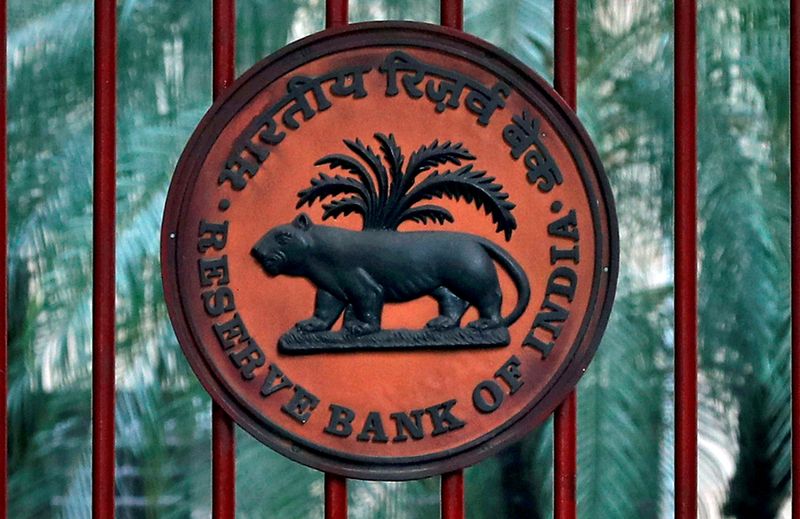
© Reuters. FILE PHOTO: A Reserve Bank of India (RBI) logo is seen at the gate of its office in New Delhi, India, November 9, 2018. REUTERS/Altaf Hussain
By Swati Bhat
MUMBAI (Reuters) – India’s central bank is widely expected to raise its benchmark rate on Thursday for the seventh consecutive meeting and leave the door open for more increases to bring inflation back within its target range, economists said.
A large majority of economists, 49 of 62, said the Reserve Bank of India (RBI) would lift its repo rate by 25 basis points to a seven-year high of 6.75% at the conclusion of its three-day meeting on April 6. The central bank has already raised rates by 250 basis points since May last year.
“The need for another rate hike is driven by elevated level of core inflation which has remained near or above 6% since middle of 2021,” said Gaura Sen Gupta, an economist with IDFC FIRST Bank.
Retail inflation rose 6.44% year-on-year in February, easing from 6.52% in January but has remained above the central bank’s mandated target range of 2%-6% for 10 out of the last 12 readings.
Core inflation, which excludes volatile food and energy components, was also expected to have stayed high between 6.05%-6.12% in February, according to estimates from three economists.
Unseasonal rains could keep food prices high and a surprise decision by OPEC and its allies to cut output recently has also pushed up oil prices which could add to imported inflation.
“The policy space to focus on inflation is lent by domestic growth conditions holding-up, supported by urban consumption and services sector recovery,” Sen Gupta said.
India’s manufacturing sector expanded at its fastest pace in three months in March while services industry growth eased slightly from February’s 12-year high, private business surveys conducted by S&P Global (NYSE:) showed.
A few economists, however, said that signs of turmoil in the U.S. and European banking sector could lead to tighter financial conditions and a steeper global slowdown. Early signs of a slowdown in India are also visible in easing imports and plateuing bank credit demand.
“Risk management considerations mean that MPC will opt for a pause in April,” said A Prasanna, head of research at ICICI Securities Primary Dealership. The committee will retain its option to hike later by maintaining its phrase ‘withdrawal of accommodation’, he said, essentially holding on to its tightening bias.
The Reuters Poll showed that a majority of respondents, 20 of 36, expect the central bank would maintain its ‘withdrawal of accommodation’ stance while the remaining 16 said it would shift to neutral.
Banking system liquidity has improved in recent days after having been in deficit towards the end of March. Liquidity surplus stood at 2.11 trillion rupees on Wednesday, its highest since Sept. 5 and more than double the 1.04 trillion rupees surplus in the previous session.
However, after the initial few days in April, liquidity is expected to tighten again as the government kickstarts its borrowing programme and credit offtake from banks’ increases.
“While the central bank might step in to thaw conditions via ad hoc variable repo rate operations, preference will be to keep the net liquidity balance close to non-inflationary neutral or slight deficit, with relief expected by way of government spending or likely return in portfolio inflows,” said Radhika Rao, senior economist at DBS Group (OTC:) Research.





